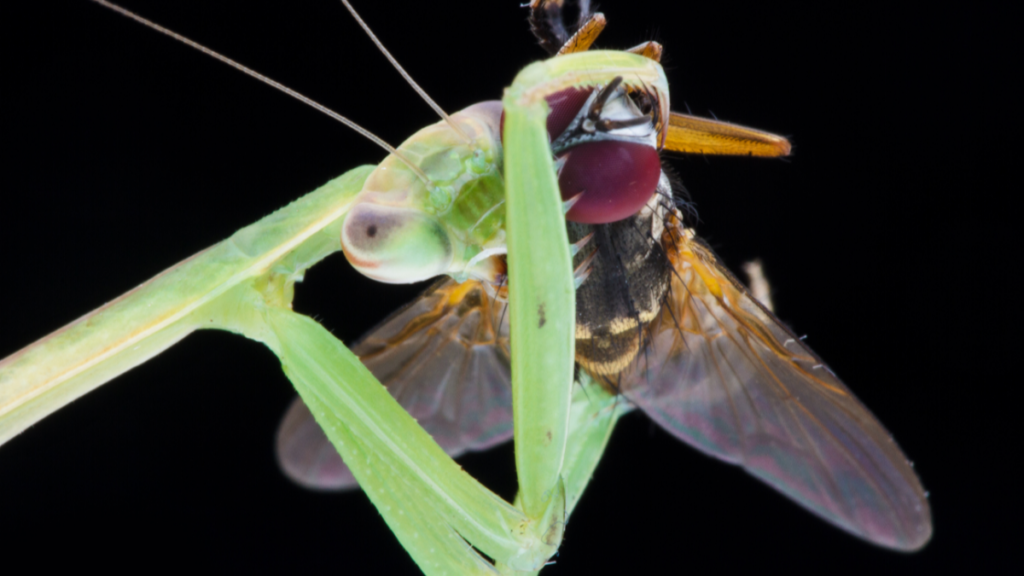Welcome back to the Lab!
Last week, we began what will ultimately be a multiple-part series on keeping insects in the classroom (though these primers can easily be applied to keeping insects at home as well). This week, we take a look at the ultra-popular garden predator, the praying mantis.
Like all insects, mantids begin their life as an egg. The adult female will lay several hundred at a time, all encased in a special egg case called an ootheca. Ootheca can be purchased at most garden supply centers, and are usually one of two species: Tenodera sinensis, the Chinese mantis, or Mantis religiosa, the European mantis. As their name suggests, they are not native to the United States, but have been introduced to maintain populations of garden pests. Most adult mantids you find in the wild are these species, though we do have a couple native species in central/east Montana.

Despite that these non-native species have established populations across the US, I still do not endorse releasing captive-bred mantids in the wild. This was not always my stance, as mantids have long been regarded as a safe alternative to pesticides and are a great boon to gardeners. But as we continue to experience mild winters, there’s a chance this introduced species is successfully reproducing in the wild without our help. The evidence for this is anecdotal at best, but it’s hard not to listen to that little twinge of concern in the back of my brain. Luckily, mantises are easy to care for for the entirety of their lives, which are relatively short.

f you choose to purchase an ootheca from a garden supplier and want to raise the young, be forewarned: you may soon have hundreds of babies on your hands. They are small, fast, delicate and chances are, they’ll eat each other in the same container. Which, if you don’t want to care for hundreds of teeny mantis babies, is probably for the better.
Mantids eat. Every. Day. As young, they will feast on fruit flies, and will progress to larger prey as they get older. They can typically handle food that is twice the size of their head, and seem to prefer catching flying insects (housefly problem solved).

So what if you capture a wild adult?
One of my favorite mantis-related phone calls was a father asking for advice on whether or not he should let his kids keep a mantis they caught in their yard. They had never had a pet before, and he was wondering if it would be a good first-time caregiving endeavor. My answer? Of course!
For their cage setup, you want to make sure the enclosure is 3x their size in height, and 2x their size in width. This is in case the mantis still has a few molts left; they molt hanging upside down, and if the enclosure is too small, they can suffer as a result. Not sure if your mantis is an adult or not? Easy: Adults have wings, juveniles and sub-adults do not. Mantids, like all winged insects, will not molt again once they’ve reached adulthood.

Mantids spend a lot of time hanging upside down, so be sure to provide structures like sticks and leaves: I enjoy making enclosures look as close to their natural habitat as I can, but as long as they have food, water, and a place to hang out, they’ll be happy.
Mantids will get most of the water they need from their prey items (remember: they are voracious eaters and need to eat every day) but be sure to provide a light misting every day as well. Thirsty mantids will readily drink the water droplets, and it’s very fun to watch.
Until next time, thanks for visiting the lab!
Bug Wrangler Brenna
brenna@missoulabutterflyhouse.org
Want to revisit a previous Notes from the Lab issue? Check out our archive! Do you want to request a subject for an upcoming issue? Email me at the address above and put “Notes from the Lab” in the subject line.